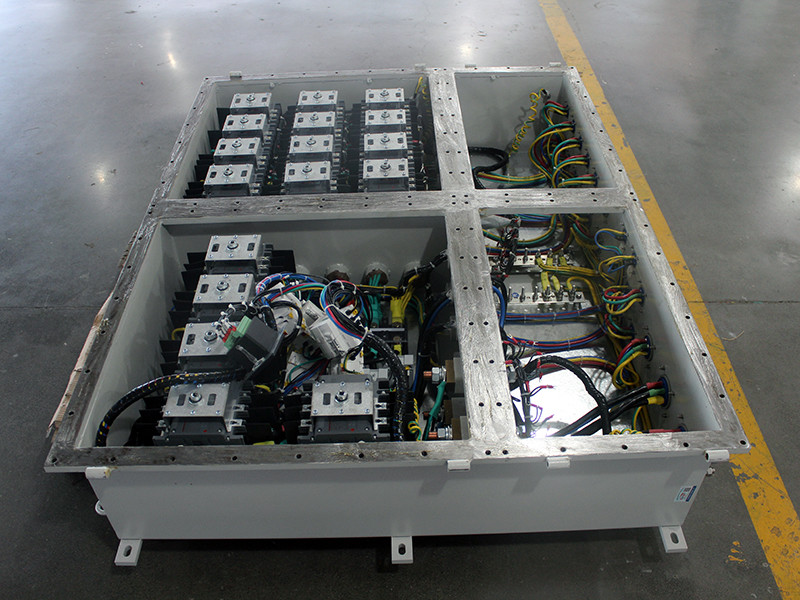防爆外殼係使用最廣泛嘅配電設備, 提供全面保護. 最常見的類型是隔爆型和加壓防爆外殼, 滿足各種要求. 好多用戶想知呢兩種類型之間嘅區別. 呢度, 我哋深入了解了 隔爆 同加壓防爆外殼.

防爆原理:
隔爆外殼:
顧名思義, 呢啲外殼可隔離爆炸. 它們扮有可能產生火花嘅電子元件, 弧, 或危險溫度, 把內部空間與外部環境分開. 外殼可承受內部爆炸嘅衝擊, 維持爆炸壓力而唔造成損壞. The gaps in the enclosure structure also cool down flames, reducing the speed of 火焰 propagation or stopping the acceleration chain, thus preventing flames or arcs from reaching the external explosive environment and achieving the flameproof purpose.
Pressurized Enclosures:
These enclosures are filled with fresh air or inert gas (compressed air) at a certain pressure to prevent external combustible gases from entering. This keeps the 爆炸物 gases from coming into contact with internal ignition sources, thus preventing explosions.
Usage:
Flameproof protection is achieved through the physical structure of the enclosure and requires only standard commissioning for use.
Pressurized types require a gas supply (such as instrument air, 空氣壓縮機, gas cylinders), connecting the air supply pipe to the inlet interface of the enclosure. Once pressurized and adjusted, they can function normally.
功能性:
Flameproof distribution boxes offer basic functions like distribution, 控制, power supply, remote operation, 過載保護, short-circuit protection, leakage protection, and photocontrol. 然而, they have limitations, such as inadequate heat dissipation, overheating protection with high-power components, and unresolved issues with explosion-proof touch screens. Adding a touch screen protective door can lead to failure.
Pressurized enclosures not only possess some functions of flameproof types but also feature interlocking alarms, automatic re-pressurization, pressure relief, remote monitoring, and high electrical automation. They can meet any industry’s explosion-proof requirements with robust heat dissipation capabilities. Large power inverter heat issues can be resolved by adding an explosion-proof air conditioning unit. Since pressurized explosion-proofing does not require flameproof surfaces, touch screens can be directly installed on the enclosure with windows.
Pricing:
The price difference between flameproof and pressurized types primarily stems from their size, with pressurized materials being generally smaller.
With this comprehensive comparison of flameproof and pressurized explosion-proof enclosures, users should now understand the differences between the two and can make informed choices when purchasing based on specific needs.
 深海防爆
深海防爆
